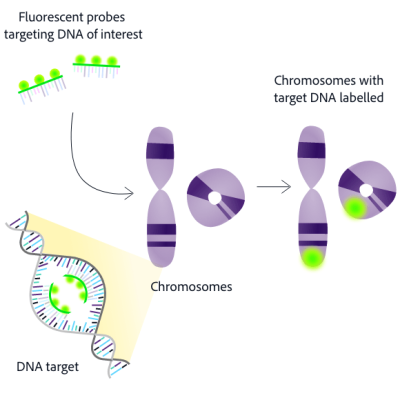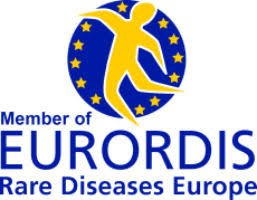As we have seen karyotyping can tell us if there is a change in the shape or number of Chromosomes, such as when a chromosome forms a ring structure.
FISH or Fluorescence In Situ Hybridisation to give it its full name, can additionally be used to see if any regions of the chromosome are missing or are in the wrong place. This can help explain what might have caused the change in shape of the chromosome and why we see the symptoms in people diagnosed with r(20) syndrome.
However, not all people diagnosed with r(20) syndrome are the same:
Some people with r(20) syndrome have pieces missing from the top of chromosome 20, some people have pieces missing from the bottom, some have pieces missing from both ends and other people have no parts of the chromosome missing at all!
In fact, the majority of people diagnosed with r(20) syndrome appear to have no parts of the chromosome missing when tested using this (and other more detailed) techniques, which starts to explain why r(20) syndrome is so rarely diagnosed – but also raises the question as to what exactly is causing the symptoms we see in the person with r(20) syndrome? If only we could find the root cause of r(20) syndrome, we might find clues to solving treatment options.
Watch this short videos to learn more…
More in this series:
UP NEXT:
- 7 First case of r(20) syndrome diagnosed 1972
- 8 Evolution of r(20) diagnosis









